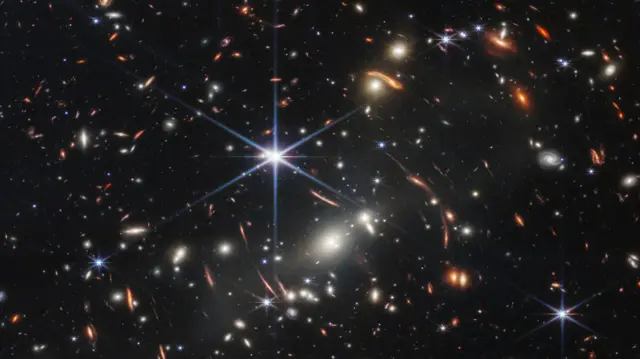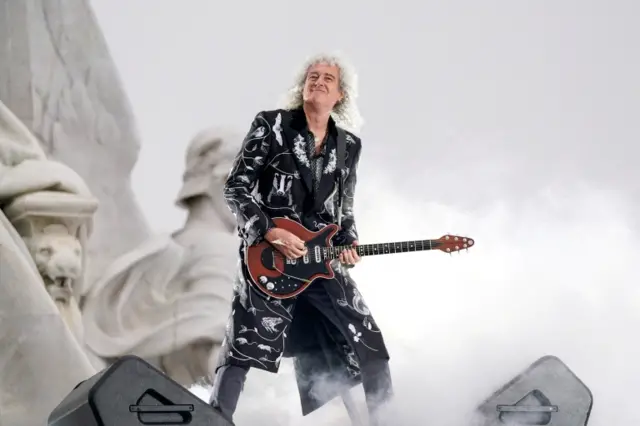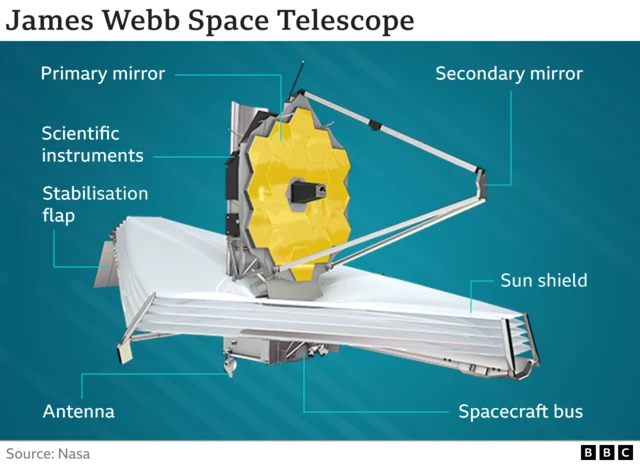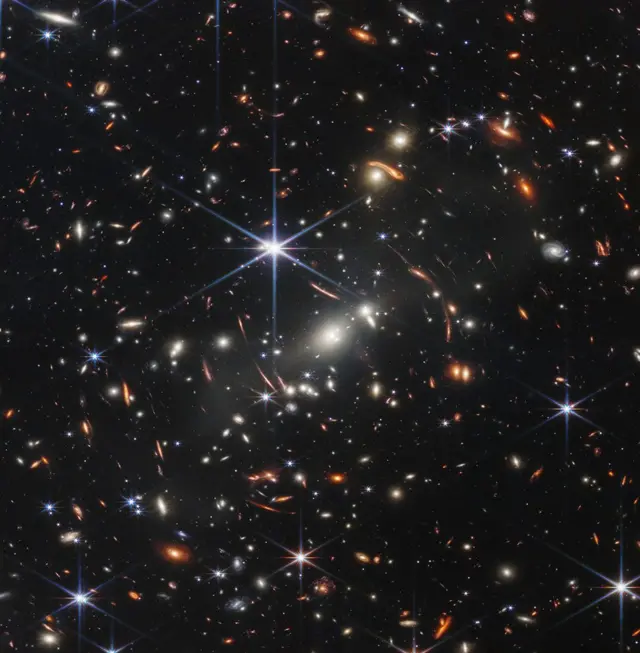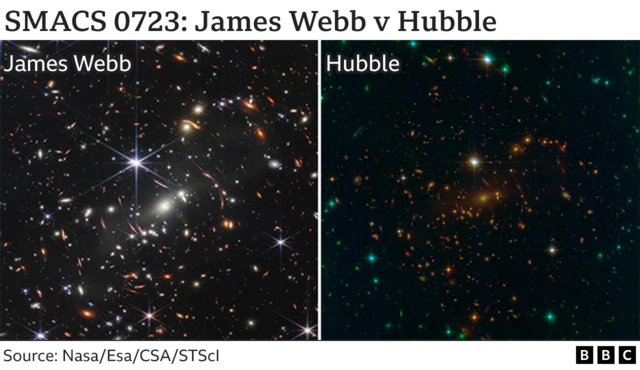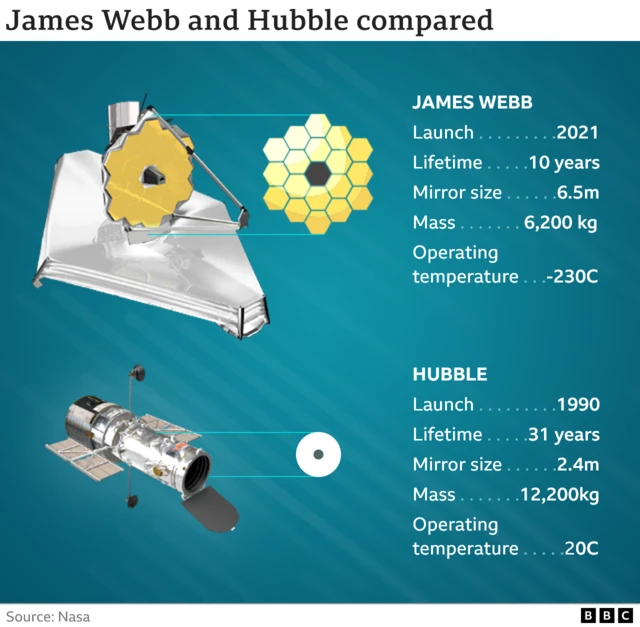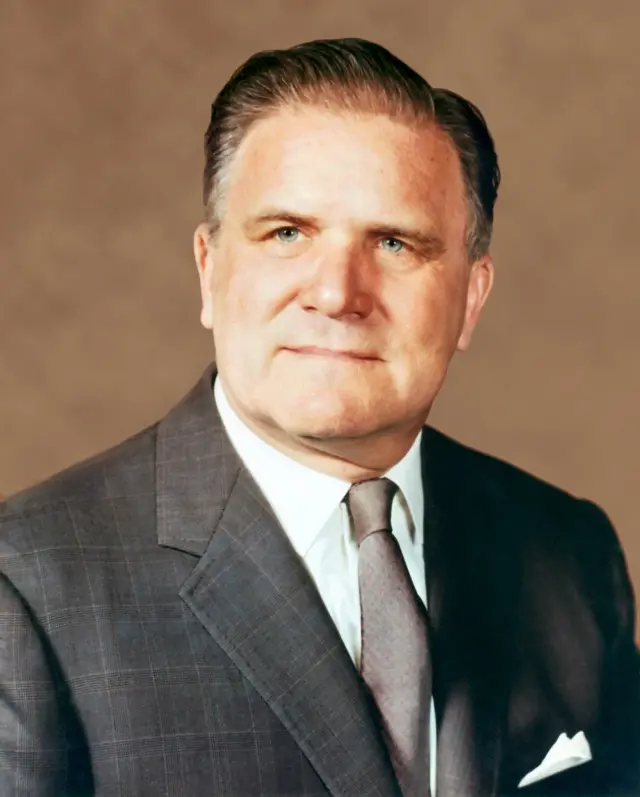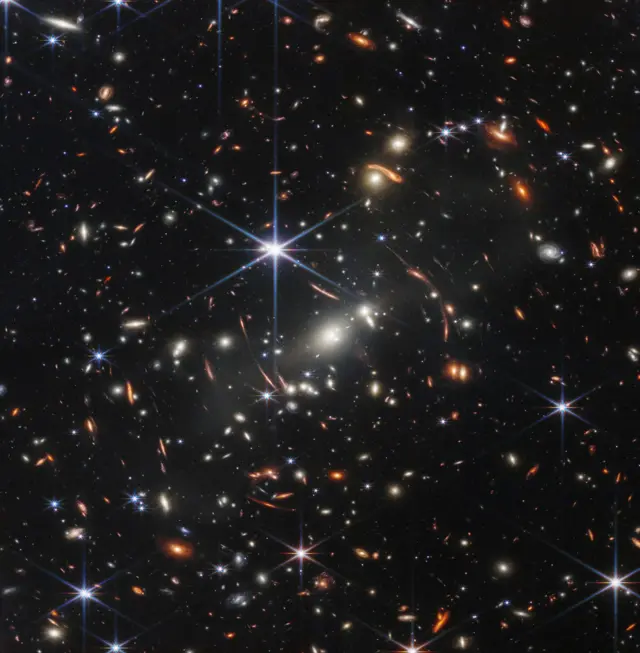We will get a view of the universe we've never seen before - Nasapublished at 15:17 BST 12 July 2022
Nasa administrator Bill Nelson, who in 1986 became the second sitting member of US Congress to fly in space, takes to the stage, saying: "It tells us something about Nasa's unmatched ingenuity, where we make the impossible, possible.
"It's not going to stop - this telescope has got fuel for 20 years."
He contnues: "People across this planet are going to see the images captured by this telescope and every image is a new discovery that will give a humanity a view of the universe we've never seen before."
He says the images will show the "formation of stars and devouring black holes".
He says the telescope will penetrate through the dust clouds and show light far across the corners of the universe.
